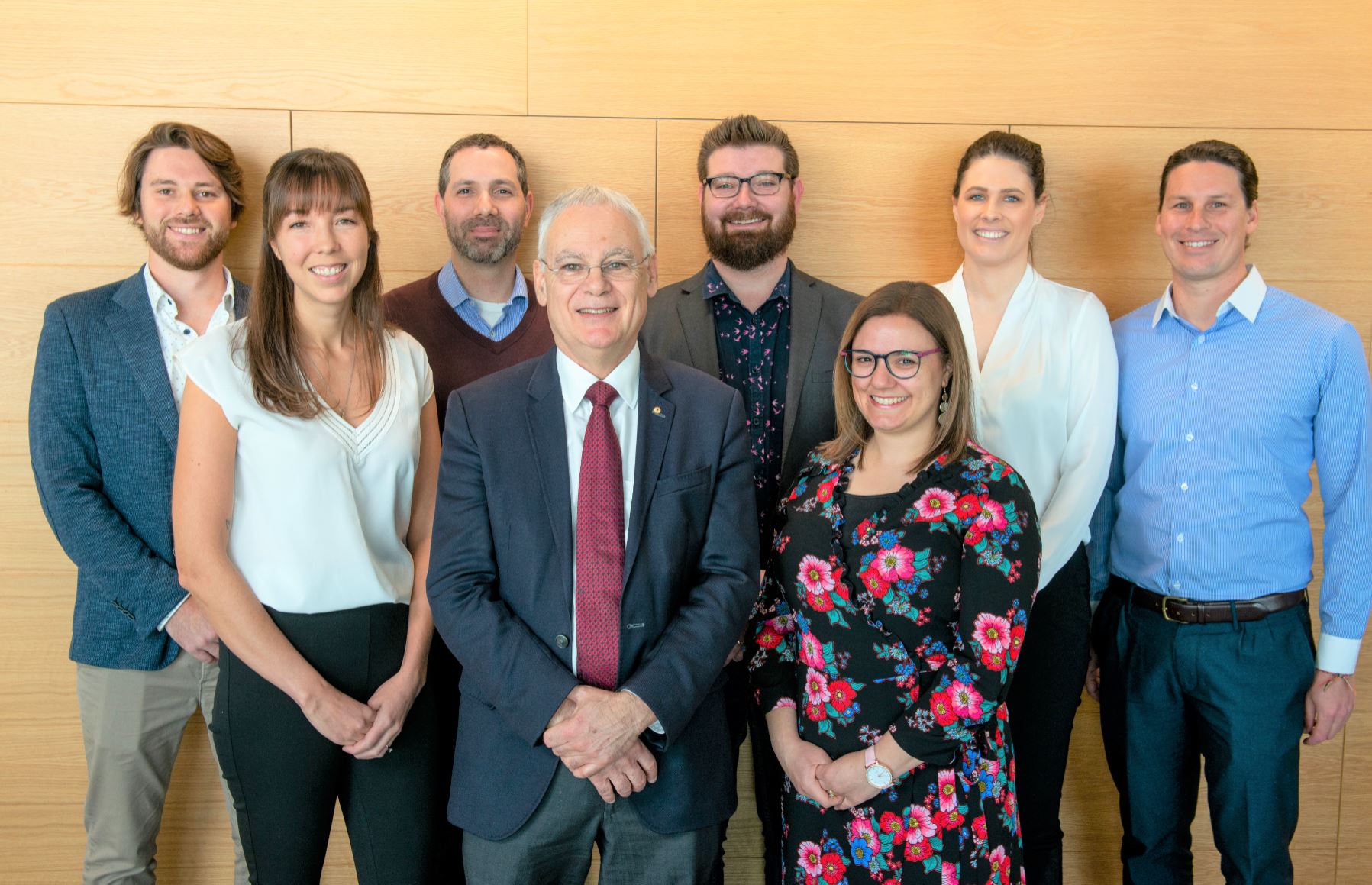
Deciphering the cause and cure for chronic, unidentifiable pelvic pain – a condition believed to affect one in every ten people – may be a step closer thanks to the generous support of Flinders donors.
Donor generosity is also supporting research that may lead to better informed public policy, greater opportunities for people living with intellectual disabilities, more reliable prediction of cardiovascular disease and understanding the link between the environment and genetics in the development of colon cancer.
These are amongst 10 research projects awarded Impact Seed Funding to support Flinders Early Career Researchers to get their careers underway.
Deputy Vice-Chancellor Research Professor Robert Saint says the idea behind the seed funding is to provide the initial support for promising researchers to propel their research to the stage where it can attract larger scale funding.
“Often the first grant is the hardest as many funding bodies want to see evidence of success before they’ll award funds, yet achieving that success is incredibly difficult without any funding in the first place.
“In a vote of confidence in Flinders’ emerging talent, our benefactors and alumni have contributed valuable dollars, matched by the University, to help some of our most promising early career researchers get a foothold in this highly competitive space” Professor Saint says.
In announcing the 10 successful recipients, Professor Saint invited each to deliver a one minute presentation to explain why their research matters and the difference they hope it will make, giving donors a first-hand insight into the potential impact of their support.
An example of the inspiring projects these funds are supporting is the work being undertaken by Archaeologist Dr Ian Moffat, who is seeking to unlock the secrets of ancient rock art in remote Arnhem Land, as explained in his presentation recorded on-country.
The successful projects were selected from 75 submissions, and each receive up to $10,000 to progress their research in the coming year.
Dr Justin Chalker (College of Science and Engineering)
“New Frontiers in Sulfur Polymers”
Justin’s project will explore novel use of waste sulfur to develop non-polluting polymers that could acts as replacements for plastics, create a new generation of Infrared films, and aid the recycling of precious metals from electronic devices.
Daniel Fassnacht (College of Education, Psychology and Social Work)
“A pilot study of a novel Podcast to improve knowledge and help-seeking for people with eating disorder symptoms”
Dan’s study seeks to understand why the vast majority of those with eating disorders don’t seek professional intervention, and aims to harness the power of broadcast to heighten awareness and break down barriers to potentially life-saving help.
Emily Fobert (College of Science and Engineering)
“Artificial Light at Night in Marine Systems”
Just as people have trouble sleeping with the light on, Emily’s work is examining how artificial light affects animals, such as stopping fish from breeding. She aims to form an extended network of experts to address light pollution so all creatures can get a good night’s sleep.
Luke Grundy (College of Medicine and Public Health)
“Maladaptive Response to Urinary Tract Infection in Chronic Pelvic Pain”
Why does some pelvic pain linger long after the infection that caused it has resolved? Luke is seeking to understand why some nerves between the bladder and spine become hypersensitive, in a quest for a solution to a currently untreatable chronic pain problem that affects some 10% of the population.
Julie-Ann Hulin (College of Medicine and Public Health)
“UGT8: a new factor linking environment and genetics in colon cancer?”
The third most commonly diagnosed cancer in Australia, colorectal cancer is attributed to both genetic and environmental factors, but ultimately is the result of over-growth of the intestinal stem cell population. UGT8 is an enzyme present in these stem cells that may be key to controlling stem cell activity and preventing cancerous growths. This research aims to identify enzyme signalling pathways which may result in novel drug target development.
Alyce Martin (College of Medicine and Public Health)
“The role of mechanically-induced serotonin release in regulating gastrointestinal motility”
Serotonin has an important role in the body, from affecting moods to contributing to digestive processes. Alyce’s research will examine ways of activating serotonin to aid smooth bowel function and address issues such as Irritable Bowel Syndrome, Inflammatory Bowel Disease.
Ian Moffat (College of Humanities, Arts and Social Sciences)
“Reconstructing Rock Art Landscapes Using Digital Technologies: A Case Study from Red Lilly Lagoon”
Using innovative drone imagery and geophysical survey Ian aims to reconstruct the palaeogeography of the Red Lilly region of Arnhem Land to understanding how rock art was influenced by factors such as elevation, distance to the ocean and local vegetation. Harnessing techniques never before applied to rock art research, it promises to inform rock art studies world-wide.
Fiona Rillotta (College of Nursing and Health Sciences)
‘Further Up the Hill’ – 20 years of inclusion of people with intellectual disability at university: Where to Next?”
Fiona was inspired by the experience of Matthew who yearned to attend university, but his parents feared it was an impossible dream – until discovering Flinders offered Australia’s first and only program to support him to achieve his ambitions. This research will look beyond the program to understand how it is received by the wider University community and how that might translate to life beyond Flinders and into the workforce.
Shelda Sanjeev (College of Nursing and Health Sciences)
“Accurate and reliable risk prediction for cardiovascular disease using machine learning”
Development of an automated tool using machine learning could enable more accurate clinical prediction, timely intervention and earlier treatment to prevent cardiovascular disease-related illness and death. If the accuracy of the CVD risk prediction could be improved by 5% (from existing 80% to 85%) using the new tool, it could benefit 200,000 Australians.








